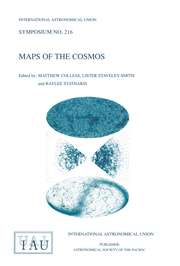Article contents
Cosmic Ray Acceleration in the Presence of Losses
Published online by Cambridge University Press: 14 August 2015
Extract
Diffusive Fermi acceleration on hydromagnetic shock fronts is a fairly slow process: most scatterings are energetically neutral, only those across the velocity jump yield a first order acceleration. Thus energy losses of cosmic rays (CR) due to e.g. adiabatic cooling, ionising, Coulomb−, or nuclear collisions, bremsstrahlung, synchrotron radiation, should play a role in limiting the acceleration, since most shocks are coupled with a loss region (HII regions, SNR's, galactic density wave, stellar wind shocks). In addition, for this process to be a local one in the galaxy, the magnetic irregularities must either be excited by the accelerated CR's or produced by a downstream source. This implies a finite wave build-up time during the shock life time. Nevertheless, in the loss free case, the time-asymptotic amplification is independent of the mean free path λ (or the diffusion coefficient κ) which only appears in the spatial scale for the CR intensity. To investigate the effects of losses, the CR diffusion equation is amended by a simple loss term f/τ, with an (energy dependent) loss time τ, f being the CR momentum distribution. For τ spatially homogeneous, a distributed source is required. Then acceleration is only effective if X ≡ 4κ/VS 2·τ ≲ 1, i.e. if the acceleration time tacc = 4κ/VS 2 is smaller than τ, on either side of the shock. As the Figure shows, also the spatial intensity profile is modified. Wave excitation in dense clouds is prohibitive. Even in a “warm” (T ≃ 104K) intercloud medium shock speeds VS ≳ 3×107 cm/sec are required to accelerate mildly relativistic particles. Waves from an upstream source (star) inside clouds should frictionally dissipate after distances L ≲ 5×1014 cm « λ (10 MeV) if a solar wind scaling is adopted. Thus, presumably in such a case there is no acceleration of stellar or shock-injected particles through a stellar wind shock by scattering within the cloud, but possibly by reflection from beyond the cloud, the condition being 1/τ · VS ≲ 1, where 1 is the linear cloud size. Diffusive approach from outside to a standing shock appears to be very energy-selective, even in a loss free medium.
Information
- Type
- Research Article
- Information
- Symposium - International Astronomical Union , Volume 94: Origin of Cosmic Rays , 1981 , pp. 359 - 360
- Copyright
- Copyright © Reidel 1981
References
- 2
- Cited by

